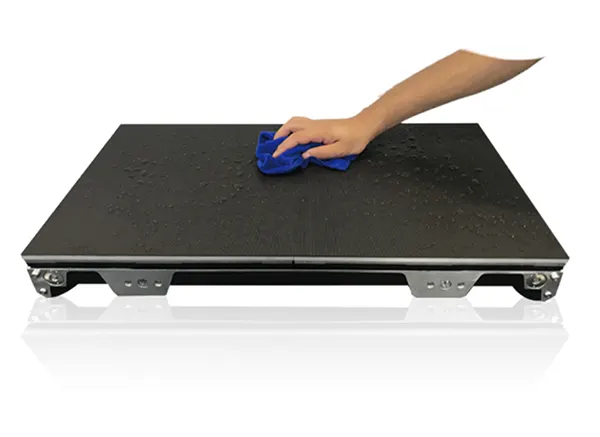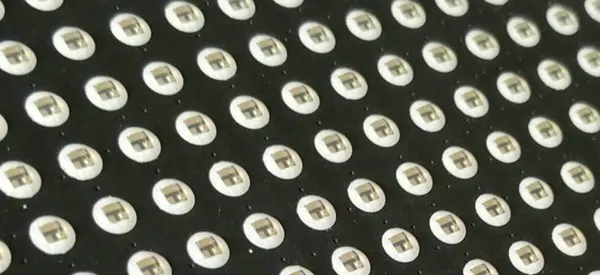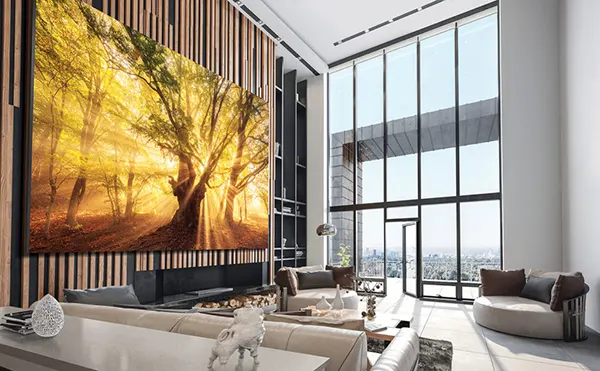These days one enjoys LEDs from his home to sporting arenas. Gone are the times of standard LEDs as they have developed with time. The appetite for new technology changes the whole driven industry. Individuals have close to zero familiarity with COB and GOB LED shows. I would agree these are the most imaginative pixel insurance LED-related technology innovations. Innovations have given the LED display industry a significant forward thrust. It is rightful to say that conventional LEDs have lost their value somewhat.
And with time given, I think further growth is due in this field.
| GOB LED Display | COB LED Display | |
| Number of Diodes | Three diodes within one single LED chip | Nine diodes or more |
| Protection Level | High | Medium |
| Lumens per watt | 50-100 lumens | 80-150 lumens |
| Screen brightness | Medium | High |
| Price | Medium | High |
| Applications | Rental LED Display
Transparent LED Display Flexible LED Display Low Pitch LED Display |
Indoor LED Display
Mini LED Display Micro LED Display |

What is a GOB LED Display?
Before indulging in the pros and cons of this LED technology, I want you to understand what GOB LED Display is. Glue on board GOB is a new technology in the LED display. It seals the module surface with a straightforward epoxy stick. This protects the showcases from destructive mishaps. Many kinds of LEDs are using this technology. This is the most cunning and incredible innovation. It emerges with many advantages. Testing shows that the protecting paste even gives heat scattering. This draws out its administration time. It satisfies the interest for diodes insurance. This invention costs cheaper, but it is also long-lasting.
The importance of the GOB LED Display:
GOB LED Display comes with the following advantages:
-
GOB innovation long-lasting displays are shockproof. It shields it from any mischief brought about by any outside trouble. It protects the presentation from your mishandlings. And this also restricts the chance of breakage during assembling, installation, or transport — an exceptional feature from my perspective.
-
GOB stands for glue on board. With this innovation, the sealant protects the LED video wall from any cracks or knocks. This glue acts as a hindrance to any screen harm. Furthermore, an LED can drop during assembly, installation, or delivery. It causes irreversible damage to the display. But don’t you worry. Cause we have the solution for you. GOB reduces this gamble of crashing primarily through its defensive glue fixing.
-
Moving forward. Waterproof and dust-proof are other excellent and, I would say, lifetime enhancing features. This technology protects the display from dust and maintains the quality of the LED. We all know that water is a foe of all-electric appliances. This innovation gives a waterproof showcase. The glue keeps the water from getting into the LED in a downpour or dampness.
All these features guarantee that the GOB LED Displays have a long-lasting life.

When GOB LEDs have such benefits, why should we look for other LED displays?
This is a question that needs some answering. GOB technology has the following disadvantages:
-
One of the cons of GOB innovation is that it makes the LEDs hard to fix. But, the glue lessens the chance of any damage by dropping or knocking. But this paste makes the method involved with improving the LED hard.
- The heat dissipation is not as good as traditional indoor LED screens. The temperature of the GOB type is about 10~15℃ higher.
-
Weather changes can also deteriorate the functioning of the display. There is a hazard of colloid staining and fractional degumming with this. The LED has the glue pasted on it as a high-pressure protective gear. It can affect the flatness and causes unevenness in the display.
-
There are also problems with secondary optical images in the GOB LEDs. It can affect the picture quality and display of the LED. Besides, the brightness can lower.
Use of GOB technology LED display:
A few LEDs are more inclined to harm than others, such as small pitch indoor displays. These LEDs are more prone to damage because of the small SMD lamp and soldering pad. For these types of LED displays, GOB technology is fundamental. It forestalls any harm and saves you a truckload of cash.
Now you need to know which type of LED uses GOB innovation. Let’s have a look:
You will most use Rental LEDs in concerts, festivals, and galas. Unfortunately, such LEDs have a common problem. They go through the gathering, establishment, bundling, and conveyance process. At any time, they can get damaged. This causes budget loss since they need constant fixes. With GOB innovation, Rental LEDs are all around secured and safe.

Transparent LEDs are famous these days due to their thin PCB. But they can get damaged. Moreover, the thin PCB and LED are insecure. The GOB technology guarantees that such LED displays stay secure in general.
Small pitch LED show
A small pitch LED show has a pixel pitch of under 2.5mm. Since the pitch is this small, the harm is unavoidable. The support is additionally challenging and expensive. GOB innovation takes care of this issue by safeguarding the screen. It forestalls any possibilities of damage that are generally conceivable.
Flexible LEDs use delicate modules. The GOB innovation can build the dependability of flexible LEDs. It safeguards them from dampness and scratches.

This type of LED screen uses an acrylic layer to protect the screen. It can influence the visuals and light transmission. As a result, GOB offers better light transmission and enhanced visualizations. It likewise offers waterproof, shockproof, and dust-proof innovation. In this way, regardless of whether somebody steps on it, it’s secured.
Irregular-shaped LEDs
Irregular-shaped LEDs are many times utilized in indoor spots. Because of this, spilling beverages is unavoidable to apply inadvertent tension on them. The GOB technology protects such LEDs. It can decrease the maintenance cost as well.
What is a COB LED Display?
Chip on board COB is one of the latest technology in an LED display. These LEDs have many small chips attached to the substrate. It results in a single diode. These LEDs occupy less room than regular ones. This innovation likewise lessens the heat produced by the chips. It tackles the issue of heat dispersal.
Unlike conventional models, COB LEDs don’t have extra packaging or lenses. Thus they have a wider viewing angle and less light loss. Furthermore, this technology has high color uniformity, contrast, and power efficiency. The COB technology has made it possible to manufacture small pitch LED large screens. But, the cost and maintenance of COB LEDs are very high.

Advantages and disadvantages of COB LED Display:
From an expert’s view, some of the pros of COB LED Display are:
- COB LEDs are minimal in size. The chips are together close and with no more focal points and bundling. This reduces the size and saves a great deal of room.
-
COB LEDs have higher light productivity than regular LEDs. As a result, the lighting impact on these LEDs is more than in customary ones.
-
The heat produced by chips is less, and no intensity dissemination happens. The COB technology has enabled the production of small pitch LED large screens on a mass scale — a significant advantage.
Now, let’s look on to the other side. The COB LEDs have the following defects:
-
Color consistency is hard to accomplish for the entire showcase. Since light splits between the chips. There is less color variety in this technology.
-
As the size of the chip builds, the light productivity of the chips and LED is less.
-
The manufacturing and maintenance cost of COB LEDs is very high.
Use of COB LED Display Technology:
-
We can involve COB Technology in Street lights to build the light’s adequacy. Home lamps utilized in homes can produce lots of heat and take up loads of power. I would suggest COB in these LED lights. It diminishes power use and heat dissemination.
-
Stadium lights can have COB LEDs since they provide a wide viewing angle. Besides, for better picture quality, the camera flash has COB technology.
-
Mini LED/ Micro LED displays use COB technology. So I think it’s essential to know about these LEDs.
Mini-LED and Micro-LED Display:
Mini-LED, also known as a sub-millimeter light-emitting diode, is about 100 microns. TV displays mainly use Mini-LEDs. Apple also uses Mini LED tech in MacBook Pro and iPad Pro.
Micro-LED is less than 100 microns in size. Micro-LED has the title of the next generation of display technology. Smartphones, virtual reality products, and TVs use this technology. Significant progress is underway to enhance this technology.

Bottom Line
Picking the right LED is not a simple choice. There is a wide range of LEDs on the lookout. GOB LED Display and COB LED display are the latest at this moment. You can settle on the right choice once you are all around informed. I would prescribe you try to do your exploration to observe which ones are the most ideal for you.


